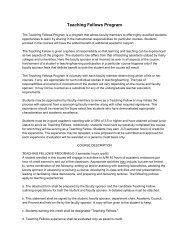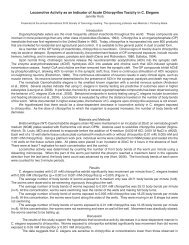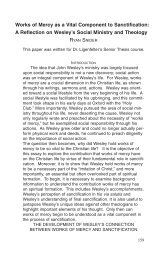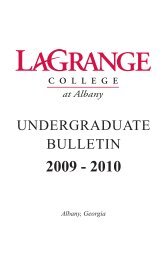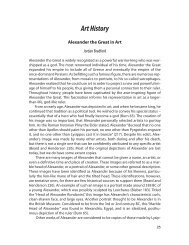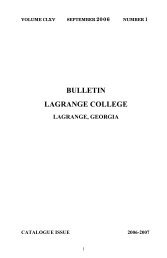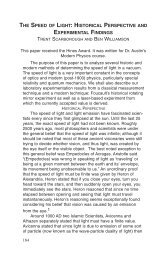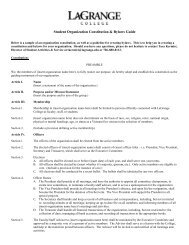History Gorbachev's Perestroika and the Collapse of the Soviet Union
History Gorbachev's Perestroika and the Collapse of the Soviet Union
History Gorbachev's Perestroika and the Collapse of the Soviet Union
Create successful ePaper yourself
Turn your PDF publications into a flip-book with our unique Google optimized e-Paper software.
described perestroika as a “socialist renewal, a deliverance from <strong>the</strong> Stalinist <strong>and</strong><br />
post-Stalinist entanglements that bound society.” 31 Ligachev’s description provides<br />
fur<strong>the</strong>r insight into Gorbachev’s intent in creating perestroika: he needed to permanently<br />
break <strong>the</strong> ties that bound society to Stalinist ideology <strong>and</strong> create a new<br />
way <strong>of</strong> thinking to drive his government. <strong>Perestroika</strong>’s effect on <strong>Soviet</strong> society was<br />
as complex as <strong>the</strong> actual reforms were <strong>and</strong> played a key role in <strong>the</strong> downfall <strong>of</strong> <strong>the</strong><br />
communist regime.<br />
In terms <strong>of</strong> <strong>the</strong> actual reforms, <strong>the</strong> overall goal <strong>of</strong> perestroika was to restructure<br />
<strong>the</strong> economy in such a way as to promote its growth. Gorbachev argued<br />
that <strong>the</strong> main priority in <strong>the</strong> development <strong>of</strong> perestroika “was to put <strong>the</strong> economy<br />
into some kind <strong>of</strong> order, to tighten up discipline, to raise <strong>the</strong> level <strong>of</strong> organization<br />
<strong>and</strong> responsibility, <strong>and</strong> to catch up areas where [<strong>the</strong> country was] behind.” 32 In order<br />
to achieve that end, Gorbachev organized a group <strong>of</strong> Party leaders <strong>and</strong> economists<br />
to perform an in-depth analysis <strong>of</strong> <strong>the</strong> <strong>Soviet</strong> economy to determine <strong>the</strong> causes <strong>of</strong><br />
<strong>the</strong> decline. That analysis was used to draft <strong>the</strong> initial policy to be implemented. 33<br />
The analysis essentially recommended that <strong>the</strong>re be a “pr<strong>of</strong>ound structural reorganization<br />
<strong>of</strong> <strong>the</strong> economy, in reconstruction <strong>of</strong> its material base, in new technologies,<br />
in investment policy changes, <strong>and</strong> in high st<strong>and</strong>ards in management.” 34 The <strong>Soviet</strong><br />
economy was backward, lacked technology <strong>and</strong> did not have <strong>the</strong> financial backing<br />
to support it. Gorbachev used perestroika as a means to fix <strong>the</strong> problems identified<br />
by <strong>the</strong> extensive analysis. When he initially introduced perestroika as his main economic<br />
policy, he drew a parallel between it <strong>and</strong> Lenin’s New Economic Policy. 35 By<br />
aligning himself <strong>and</strong> his policies with Lenin, Gorbachev was again distancing himself<br />
from Stalin by arguing that <strong>the</strong> country needed to return to its Leninist roots. In<br />
fact, he gave a speech on November 2, 1987 in which he claimed that perestroika<br />
was <strong>the</strong> continuation <strong>of</strong> <strong>the</strong> 1917 Revolution <strong>and</strong> signaled a return to true Leninist<br />
thinking. 36 In effect, he was able to garner much support for perestroika by compar-<br />
<br />
<br />
<br />
Laura Cummings




